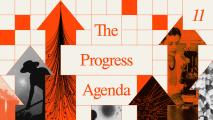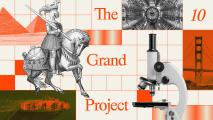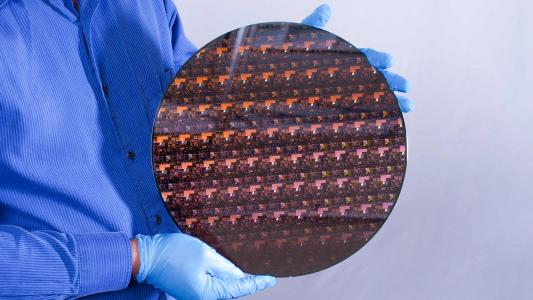Google has unveiled Project Starline, a new 3D video chat technology designed to make people feel like they’re actually sitting across from one another and not communicating through computer screens.
The year of the video chat: Video chat was already a thing before the pandemic, but 2020 really brought the tech to the forefront.
Work meetings that would’ve taken place in conference rooms moved to Zoom, classrooms were replaced by computer screens, and families and friends gathered online instead of in homes and bars.
The challenge: While video gives us a way to see and hear other people, the experience still falls short of in-person communication.
“The way that we engage in space communicates a ton about our intentions, our relationships, and even our values,” digital media specialist James Jarc told CNBC in December. “With video chat, all of that stuff really gets flattened, it gets diluted, and oftentimes it gets missed completely.”
Project Starline: Google’s new 3D video chat technology aims to bridge some of that gap by making people on screens appear more like they do in real life.
“Imagine looking through a sort of magic window, and through that window, you see another person, life-size and in three dimensions,” Clay Bavor, Google’s VP of virtual and augmented reality, wrote in a blog post. “You can talk naturally, gesture, and make eye contact.”
“The effect is the feeling of a person sitting just across from you,” he added, “like they are right there.”
How it works: Google’s 3D video chat system is large, about the size of a restaurant booth. On one side is a bench for a person to sit on; on the other is a 65-inch display equipped with cameras, sensors, and other tech.
This tech captures the image of the person sitting on the bench, compresses it, and then sends it to another booth. A person at that booth can then see their chat partner in what appears to be 3D, and that person can see them.
“To make this experience possible, we are applying research in computer vision, machine learning, spatial audio, and real-time compression,” Bavor wrote.
“We’ve also developed a breakthrough light field display system that creates a sense of volume and depth that can be experienced without the need for additional glasses or headsets.”
We believe this is where person-to-person communication tech can and should go.
Clay Bavor
The cold water: Project Starline is still very much a prototype, with just a few working systems installed in Google offices. The company has been demonstrating the 3D video chat tech for businesses, though, so that it can incorporate their feedback into its development.
Google hopes to deploy the system on a trial basis with some of those companies before the end of 2021, but it’s hard to say when (or even if) Project Starline might reach consumers.
Looking ahead: Even if we aren’t all installing high-tech 3D video chat booths in our offices anytime soon, Google does appear committed to using what it’s learned from Project Starline to improve how we connect online.
“We believe this is where person-to-person communication technology can and should go,” Bavor wrote, “and in time, our goal is to make this technology more affordable and accessible, including bringing some of these technical advancements into our suite of communication products.”
We’d love to hear from you! If you have a comment about this article or if you have a tip for a future Freethink story, please email us at [email protected].






